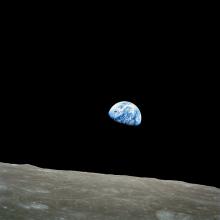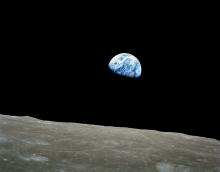Listen to today's episode of StarDate on the web the same day it airs in high-quality streaming audio without any extra ads or announcements. Choose a $8 one-month pass, or listen every day for a year for just $30.
You are here
Close to the Sun
Break out the umbrellas, the swimsuits, and the sunscreen. Sun and Earth are closest for the entire year today, so we’re getting a little extra warmth from our favorite star.
Earth is at a point in its orbit called perihelion — a word that means “closest to the Sun.” We’re about a million-and-a-half miles closer than the average distance.
And as you might expect, we get a little extra solar energy from that proximity — about three percent more than we average over the course of a year.
At this time of year, though, the Sun’s rays are falling most directly on the southern hemisphere, so it gets the bulk of the energy. But the oceans and atmosphere absorb much of that extra heat and transport it around the globe. That helps keep the two hemispheres in balance.
The distance to the Sun changes because Earth’s orbit is an ellipse — like a slightly stretched-out circle. In fact, all the planets follow elliptical orbits. But the “stretching” varies from planet to planet.
Venus has the most nearly circular orbit, so Venus’s distance from the Sun varies by less than one percent. Mercury, on the other hand, has the most lopsided orbit — its distance from the Sun varies by a fifth. So peak daytime temperatures on the airless planet vary by hundreds of degrees — all thanks to the changing distance to the Sun.
Our distance to the Sun will be increasing for months — until we reach our farthest point in early July.
Tomorrow: Florida clams.
Script by Damond Benningfield






